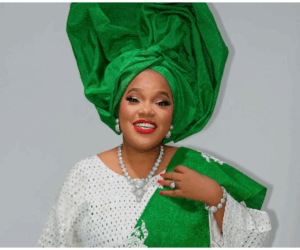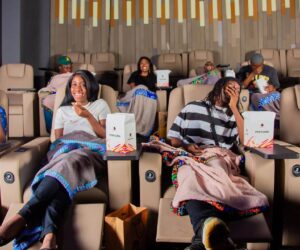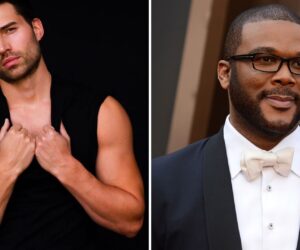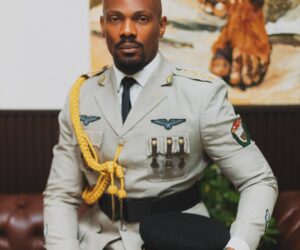When Tiffany Amber founder Folake Folarin-Coker, LA-based creative Ugo Mozie, style tastemaker Jennifer Oseh (The Lady Vhodka), and pop-culture fashion voice Qing Madi sat down with Latasha Ngwube to talk “Fashion × Film × Afrobeats,” what emerged was less a dry how-to and more a manifesto: Nigerian style is a story engine, and Nollywood must stop treating costume as an afterthought.
Below is a long read that stitches their voices with context and practical takeaways for filmmakers, costume designers, stylists and anyone curious about how wardrobe shapes culture on screen.
&format=jpeg)
The framing: why this conversation matters now
Curating a world-class wardrobe is second nature for TokStarr. Read our breakdown of her unforgettable fashion journey into motherhood and her fierce Scorpio birthday style.
The Nigerian film industry doesn’t sleep, not for a second.
On ‘Industry Machine,’ Odumodublvck recruits a long list of guest artists who showcase his access but also lengthen the album and stunt its experience.
Afrobeats is more than music; it’s a global mood. Nollywood films, streaming series and music videos are the visuals powering that mood. Costumes and street style do the heavy lifting: they tell viewers who a character is before they speak a line, they timestamp an era, and they export culture on a large scale.
Latasha opened the panel with an obvious but crucial point: when fashion and film collaborate well, the work travels. The clothes translate the story to audiences who may not share the language but feel the mood.
The speakers took that prompt and ran into authenticity, ownership, care, and the commercial realities of lending couture to set.
ALSO READ: Finishing a Nollywood Film Is Easy. Making Money Off It Is the Real Story
Authenticity first, Ugo Mozie’s plea
Ugo Mozie, who has styled global superstars and builds bridges between LA and Lagos, delivered the evening’s thesis early: authenticity sells.
“Use visuals to tell an African story that translates without having to understand the language… when you are authentic in your art expression, the world can receive it,” he said.
Ugo’s point is practical and strategic. “When filmmakers mimic Western tropes in how they shoot, in how they dress characters, the work loses a distinct voice.”
“The most iconic African films, he argued, resonated because they were grounded in local texture: language, music, fabrics, gait, ritual. That specificity becomes universal.”
He also extended an olive branch to young creatives: he’s open to collaborating. For a Nollywood that wants to travel beyond its borders, Ugo insisted, production teams must trust local designers to create looks that feel native, not imported.
READ THIS: Nigeria Film Crew Community Speaks Out Against Bullying and Abuse on Set
&format=jpeg)
Folake Folarin-Coker’s protectionism
Folake Folarin-Coker, Tiffany Amber’s founder and a 25-year icon of Nigerian womenswear, brought the room back down to soil: clothes are creators’ babies. She described a turning point: sending couture to a production only to receive it back “rough and dirty.”
“My designs and clothes are my babies,” she said. “I stopped doing that.”
Her warning is twofold. First: designers’ work should be respected on set. Costume usage requires care, planning, and a shared agreement on how pieces will be treated. Second: collaboration doesn’t always mean handing over flagship pieces.
She also shrugged at the imitation “imitation is flattery”, but reminded the room that true design value is in intentionality. Costume must serve character, not ego.
Notably, Folake’s film work isn’t abstract: she was one of the costume designers on the biopic Funmilayo Ransome-Kuti, which underlines her command of period accuracy, a reminder that historical authenticity demands deep collaboration between director and designer.
&format=jpeg)
Style as declaration: Qing Madi and Jennifer Oseh
Qing Madi and Jennifer Oseh defended the right to announce yourself.
“Fashion should be a statement, your dress sense should announce you… You don’t have to be conventional. Fashion should announce your presence.”
&format=jpeg)
For creatives and performers, Qing’s philosophy reframes costume from “what do we need the character to wear?” to “what does the artist want to declare?”
Her style arc, tomboy, baggy, streetwear-meets-designer, is a case study in authenticity: she makes clothing choices that feel like her and amplifies that visual identity across music.
Jennifer Oseh, who styles with theatrical bravado (fedoras, wide legs, colour, print), pushed for more cross-pollination: designers + costume teams + stylists should work together earlier and harder.
She argued against apology: self-expression belongs to the artist, and everything worn should speak. A staged costume cannot be divorced from an artist’s lived style if it wants to feel real.
ALSO READ: Why Every Filmmaker Should Submit to AFRIFF (Even if You’re Just Starting Out)
&format=jpeg)
Durability, Care, and The Economics of Lending
Behind every romantic idea of “designer on set” lies production reality.
Folake’s refusal to continually lend prized garments after seeing them returned damaged is both a moral and a business boundary.
Costumers and production coordinators must address logistics: prep garments with tags and care sheets; budget for cleaning, repair and insurance; allocate duplicates for action scenes; and agree before shoot day who covers replacement costs if a garment is ruined.
Panel takeaways on logistics:
Insurance matters. Big and small productions should budget to ensure couture and key heritage garments.
Create a garment brief. Designers should be given script pages and mood boards. Designers and costume heads should be in sync about how many days a piece will be on set and what action it will endure.
Use production-grade copies. If a designer’s showroom piece is sacred, commission duplicates are built to withstand stunts or long shooting days.
Gatekeeping vs access. Folake’s approach is selective: collaborate with emerging designers who want exposure.
On imitation, accessibility and cultural ownership
Folake’s take on being copied was pragmatic: imitation shows that an idea landed. But she also reminded attendees that cultural fashion growth sustains designers when it’s supported by investment, care and official collaboration.
Panellists flagged questions of access: when Western stylists or foreign productions borrow Nigerian aesthetics without credit, who benefits?
Jennifer and Qing pushed for better pipelines: producers should include Nigerian designers in budgets and credits, and international stylists should hire local teams rather than lift aesthetics as passive references.
How Filmmakers and Designers Actually Collaborate
The panel didn’t deliver a formal manifesto, but you can distil their wisdom into an actionable checklist for production teams:
Invite designers early. Attach a costume meeting to pre-production so designers see the script, mood boards and character arcs.
Budget for garments, not just rentals. Set aside funds for insurance, duplicates, cleaning and damage.
Create a garment care plan. Designers provide care sheets; the production assigns wardrobe PA(s) responsible for upkeep.
Pair stylists with costume designers. Stylists translate contemporary influencer energy; costume designers handle narrative continuity.
Commission production-grade duplicates for risky scenes.
Negotiate credits and showroom visibility. Designers with visible credit win cultural capital and future business.
Use rising designers intentionally. They bring a fresh voice and are often more flexible with production demands.
Maintain mutual respect. Treat garments as art and designers as creative partners.
EXPLORE THIS: 10 Ways to Survive Drama on Set Without Losing Your Mind or Film
A Call to production
If Nollywood wants to be fluent in the language of global style, it must professionalise the costume chain. That means building budgets that respect design, schedules that allow fittings, insurance that safeguards designer pieces, and credit systems that elevate local talent.
Folake summed up with both a comfort and a caveat: Nigerians carry themselves beautifully and should never trade that elegance for something else.
Qing closed with a producer-friendly rallying cry: what you wear should say who you are. Ugo reminded creatives that authenticity, not imitation, is our best export.
Fashion and film cross every day on set. The question the panel left us with was not whether they should, but how they should. The answers are in early conversations, budget lines that respect craft, and a willingness to build pipelines together. Afrobeats gave the world a sound.
Nollywood, with designers like Folake and creatives like Ugo, Jennifer, and Qing leading the wave, is showing us how style can make that sound visible.
If you’re a filmmaker: call a designer. If you’re a designer, insist on a care plan before the call sheet goes out. If you’re a stylist: bring your mood board and your spine.
EXPLORE THIS: Funke Akindele Won’t Be Playing Lead in Her Upcoming December Film

![Fashion and Film Are Changing African Storytelling [AFRIFF]](https://nnu.ng/wp-content/uploads/2025/11/aa7c17b2-991d-4771-937a-2fe6d1f898b3-800x600.png)
&format=jpeg)
![5 Nigerian Films That Got the Internet Talking Last Month [Instagram/@gingerrrthemovie]](https://image.api.sportal365.com/process/smp-images-production/pulse.ng/06112025/217deeeb-9bd3-4906-adf3-1d1bfe4a3faf.jpg?operations=autocrop(140:79)&format=jpeg)
&format=jpeg)






